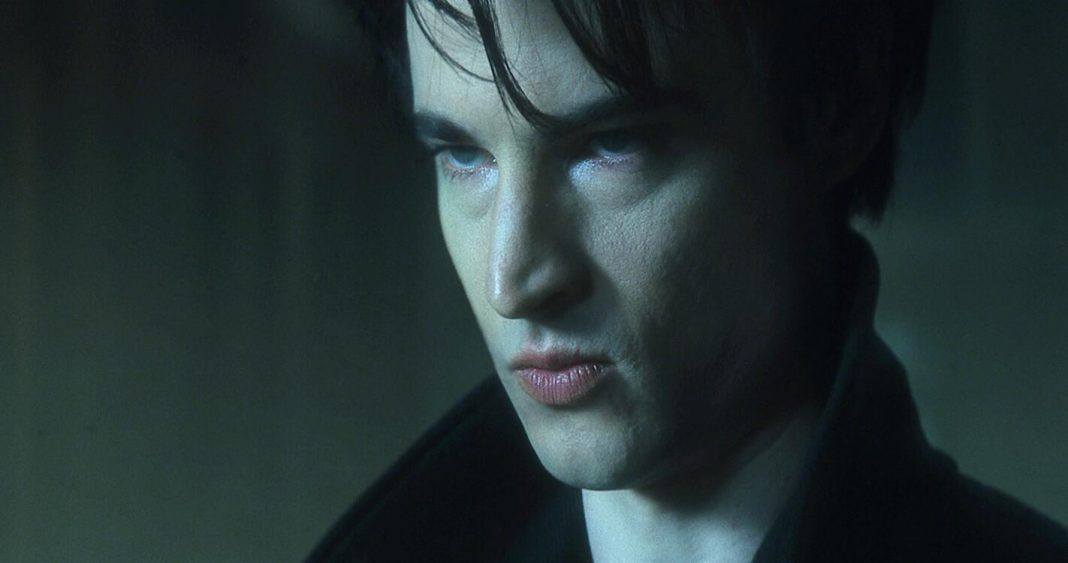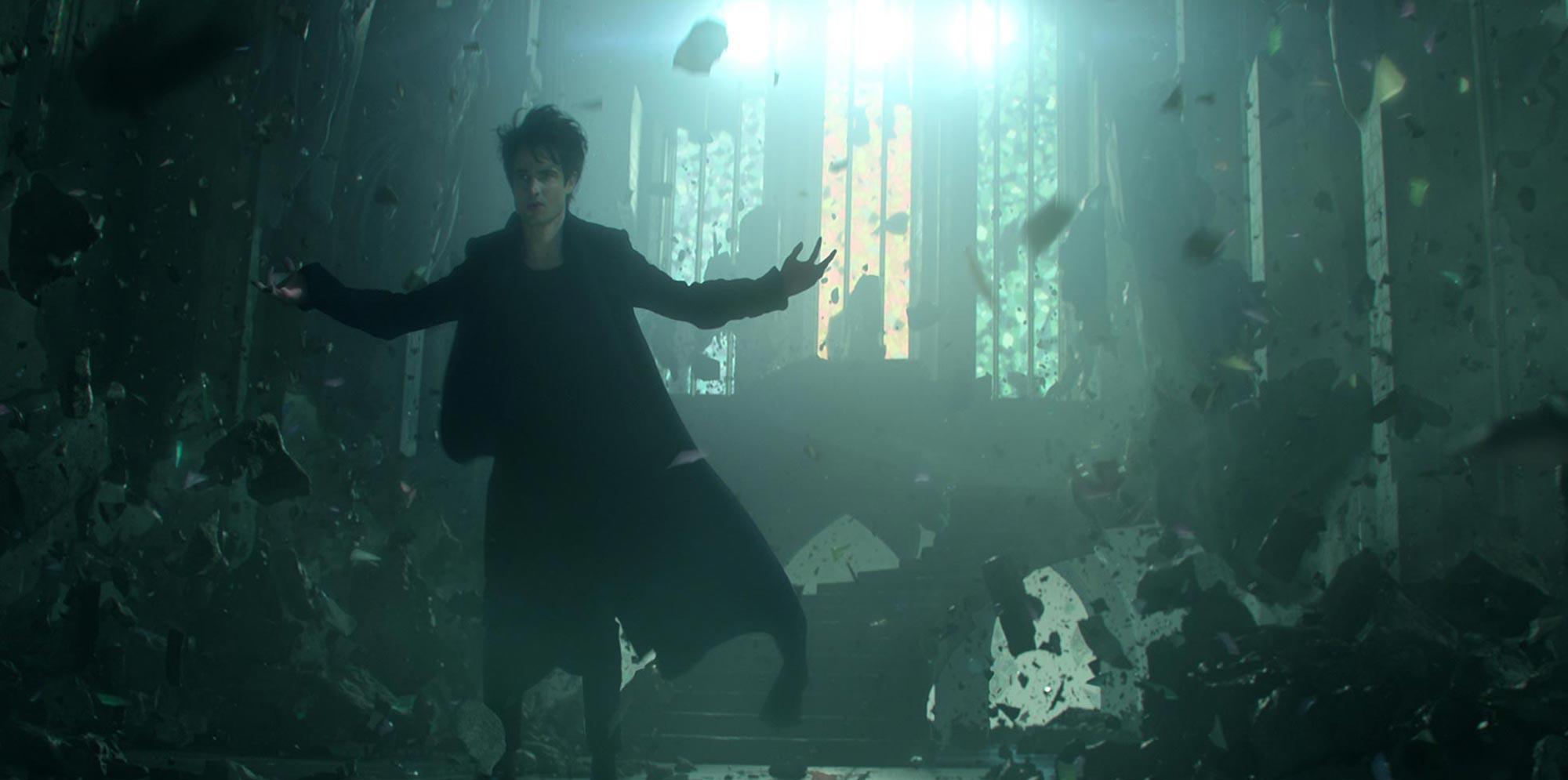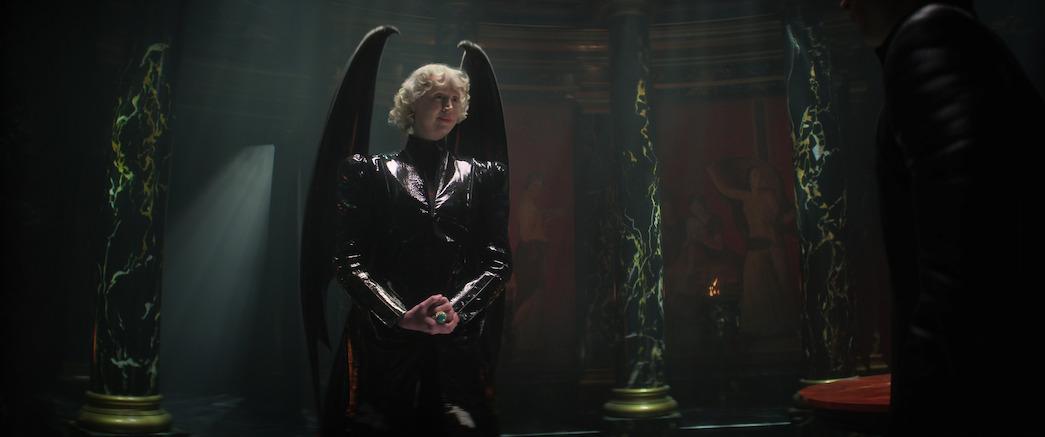by Martha Thomases
[The Sandman is a rare comic book adaptation that seems to have pleased even the original fans of the comics. Martha Thomases is not only an OG fan, but one of the people who worked on the series way before Neil Gaiman was a household name and Sandman was a literary classic. Here’s a view from a veteran.]
It was never going to be possible for me to watch The Sandman on Netflix with any pretense of objectivity. I loved the comics from the moment the first issues appeared on the shelves. I met Neil Gaiman days before I started to work as publicity manager at DC, at a signing he did at Forbidden Planet with Terry Pratchett to promote Good Omens. A few issues had already been published, and I wanted to introduce myself to Neil before we started to work together. Later, when I found out that he also loved the books of E. Nesbit (from his notes in Books of Magic), I was thrilled. He was the only adult (aside from my mother, and the staff at Books of Wonder) who said he had even heard of her. Nesbit, a Fabian socialist and friend to H. G. Wells was, according to my mother (and therefore I accept this blindly as truth), the first writer to depict children as real people, not tools to demonstrate moral teachings. Neil’s work has always been similarly insightful, whether the characters are humans, gargoyles, or scarecrows with pumpkins for heads.
My job at DC was to promote our publications to mainstream press. This meant that my purview included The New York Times, USA Today, Entertainment Weekly and the like, not Wizard or Previews, which were aimed at the fan market. With a title like The Sandman (as compared to, say, Batman), I emphasized that comics are a popular art form like movies or books, and deserved the same consideration and discernment, and attention to the creators.
The Sandman has some of the soap opera characteristics that one associates with family sagas in contemporary fiction, it is much, much more than that. With some of the best sequential artists working at the time, Gaiman told stories about all sorts of people having all kinds of human experiences. There are fantasy elements, mythologies from all over the world (and all across the animal kingdom), a few superheroes, and a bit of Shakespeare.
The Sandman is, among other things, the story of Dream of the Endless, a group of anthropomorphic representations of human experience, including Death, Despair, Delirium (who was once Delight), Desire and Destiny. (There is another sibling, to be revealed later, whose name also begins with “D.” Before that story was published, we joked that their name was Dave.)
Through it all, there is Morpheus, the Sandman, the King of Dreams. If I described what he does, you might not understand why he’s so compelling. He can be mopey and self-pitying, which I don’t hold against him because, well, I look at myself in the mirror sometimes. Still, there was something about the way he’s portrayed — the way he’s drawn — that made me feel he embodied all of my inner being. And that the people working to publish the comic had created it for me alone, for my imagination and fulfillment. The fact that thousands and thousands of other people might also feel that way did not diminish my sense that I was the only one. I felt seen in a way that was, at the time, unique for me in comics — in all sorts of popular arts.
All of this is to explain the expectations I had about seeing these stories on television.
For the most part, my expectations were exceeded. The scripts are witty — as in, it took wit to write them, not that they are conventionally funny. The production design is stunning. The casting is great. The changes in race and gender to familiar characters didn’t bother me. The actors achieved something very difficult: they made me believe everyone — human, raven, Biblical archetype — were possible.
Because this first season is based on two storylines — “Preludes and Nocturnes” and “A Doll’s House” — it’s possible for the cinematography and production design to allude to the original art without seeming disjointed. I’m curious to see how they adapt other stories by other artists. Dave McKean’s lovely end credits add to the comics connection.
Now, I’m going to tell you my trivial nitpicks, and you will lose all respect for my ability to have opinions. There were two things that bothered me. In ascending order:
* “The Sound of Her Wings” is supposed to take place in Washington Square Park, not in what I presume to be England. That’s MY NEIGHBORHOOD where it is supposed to happen. I mean, I walk across that park anywhere from six to ten times a week. For nearly three decades, I’ve enjoyed imagining Death giving Dream a tour of my favorite places. How dare they deprive me of that!
(Note: I’m not being deprived of anything. The comics still exist.)
* And then there is Tom Sturridge’s jaw. It is not as angular as I imagine Morpheus’ jaw to be. I’m not sure it is physically possible for the jaw in my imagination to exist on a human who needs to eat and breathe. It is not his fault. As soon as he moved in a scene, or spoke, I was right there with him, because acting is not about physically resembling a fictional character drawn in dozens of different ways by different teams of artists, but about talent and skill and craft, all of which Sturridge has to spare.
When I worked at DC, I used to call Neil about once a week, to keep schedules straight, inform him about stories I was trying to place, but also to talk about otters and Jack Benny and all sorts of other things. He and my late husband shared a deep interest in animation, so I was touched to see the surprise episode 11, which included an animated “A Dream of a Thousand Cats.”
I would imagine that every person who loved The Sandman in print has parallel feelings about the Netflix show. It touches the source material but is its own thing. With luck, people (and maybe cats) who see the stories for the first time will be inspired to delve back into the books.
[Martha Thomases is the creator of Dakota North for Marvel comics and a pioneer of comics publicity. She is also a world class knitter.]







The gender/race thing bothers me because it’s so heavy handed, and it serves no purpose at all other than virtue signaling.
The first person to write a children’s story that didn’t deliver moral teachings and was designed purely to entertain was Charles Dodgson (AKA Lewis Carroll) in Alice’s Adventures in Wonderland. Appropriate for this review, as it was the story of a dream!
people who gob there it couldnt be they got the best for the job no one in the series is less than compelling.and death was amazing . try again.
The gender/race thing doesn’t strike me as heavy handed. The gender/race thing is conspicuous (particularly for those who know the original comics,) but I don’t think that’s the same as it being heavy handed, clumsy, or injudicious.
As for the gender/race thing serving no purpose…what purpose should we expect casting to serve? Other than putting talented performers to work in interesting roles, that is–in which regard, this Sandman show has succeeded more than not. (My opinion, of course; your mileage may vary.)
And, perhaps, to remind that there are characters and stories–even among characters previously depicted and stories previously told–where gender/race aren’t essential, inviolable attributes. And where that’s true, why not have performers of any gender/race? Some may call that “virtue signaling” but others may just call it a virtue.
Naaah. The original poster was right — the laughable casting choices was nothing more than clumsy, heavy-handed virtue signaling.
Comments are closed.